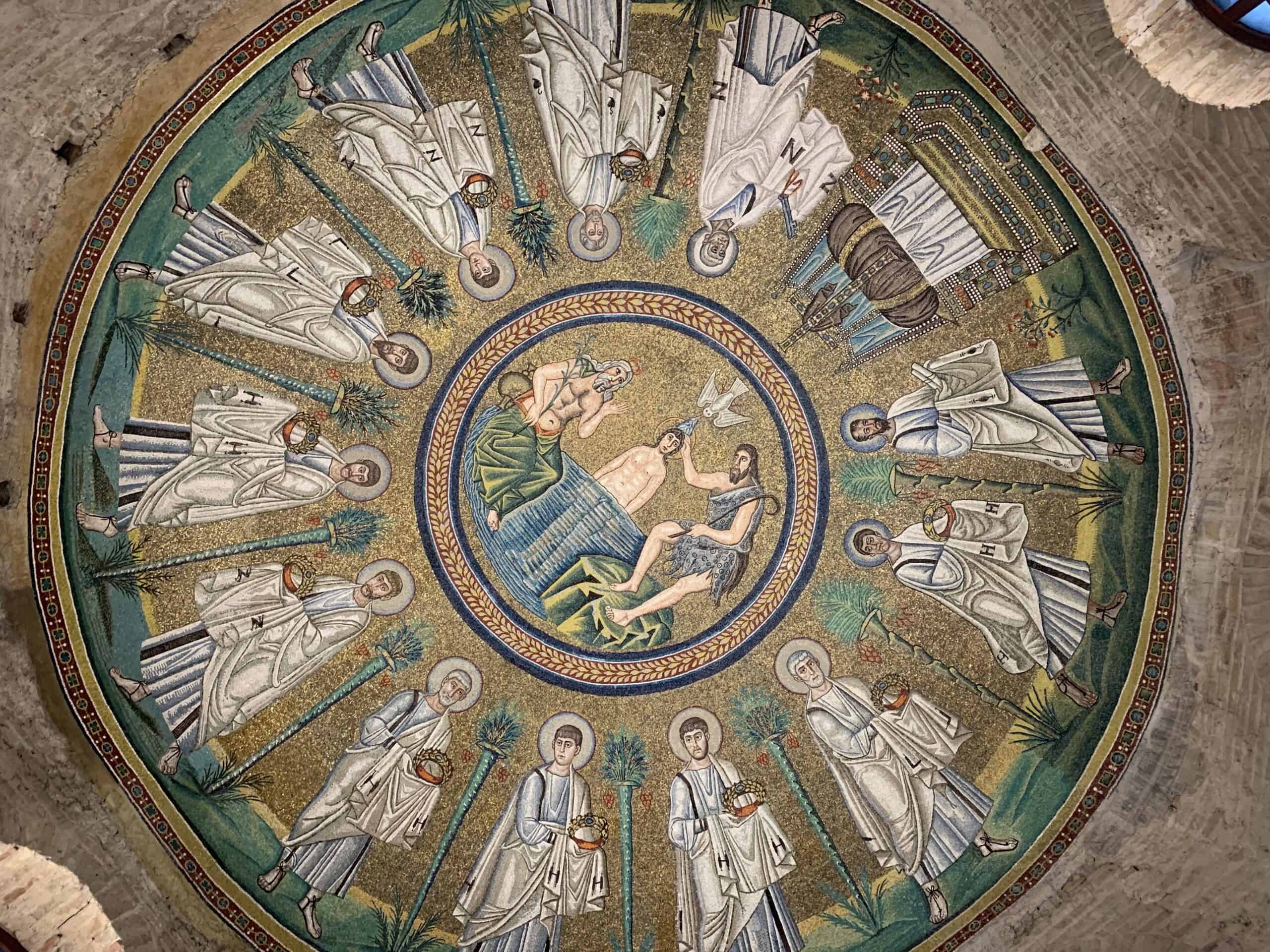
The Arian Baptistery is a building dating back to the first half of the sixth century and raised at the behest of the Ostrogothic sovereign Theodoric.
The Arian baptistery was built to make the Goths of Arian worship and the Latins of Christian-Orthodox worship coexist peacefully, keeping the two currents separate in distinct districts of the city.
It is the only baptistery built specifically for the practice of Arian worship in Italy. The Arian baptistery was built in brick and has an octagonal plan.
The interior of the structure is bare while only the dome is decorated with mosaics. At the center is the representation of the Baptism of Christ, while outside are the empty throne of the azymasia and twelve apostles divided from each other by small palms. The gold leaf background, typical of all the Mediterranean culture of the time, recalls the symbolic representations of otherworldly light.
The Mausoleum of Theodoric was built in 520 at the behest of Theodoric the Great, who intended to make that grandiose building his future tomb. As the place for the realization of this work was chosen an uninhabited area near the necropolis.
One of the main features of the Mausoleum of Theodoric is represented by the materials chosen for its construction: unlike many buildings built in Ravenna, it was made of Istrian stone instead of simple bricks.
It has a decagonal plan and is characterized by two orders: the first is precisely decagonal while the second order, smaller, is circular.
Internally the room is circular, it can be accessed via a small external staircase and contains the porphyry basin, in which once rested the body of Theodoric, then removed in the Byzantine era.
The Mausoleum is now located in a park near the center of Ravenna, and is considered as the most famous and important funerary construction of the Ostrogoths.













